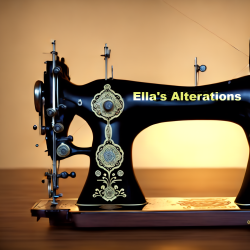Consultation and Fitting Times: Setting Expectations
The art of tailoring is more than just cutting and stitching; it’s a comprehensive process that begins with consultation and fitting. These two phases set the stage for a successful alteration, ensuring that the client’s needs and expectations align with the tailor’s expertise. This article delves into the details of consultation and fitting times, providing insights into estimated fitting times for different clothing alterations and the significance of setting clear expectations.
The Consultation Process: Building the Blueprint
Consultation is the first step in the tailoring process, and it’s a phase where communication takes center stage. It’s a chance for the client to express their desires, for the tailor to understand the garment’s possibilities and limitations, and for both parties to align their expectations.
The Importance of Clear Communication
Open and transparent communication helps in building a clear blueprint for the alteration. During this stage, the tailor will evaluate the garment, listen to the client’s requirements, and offer professional advice. This collaborative approach ensures that the client’s vision and the tailor’s understanding are in sync.
Time Required for Consultation
The initial consultation can vary in time, depending on the complexity of the alterations required. A simple adjustment like hemming might only need 10-15 minutes, whereas a detailed restyling of a dress could take up to an hour. During this time, various aspects are discussed, including:
- Style preferences
- Fabric characteristics
- Specific adjustments
- Potential challenges
- Timeline and costs
The Fitting Phase: Sculpting the Garment
Fitting is the stage where ideas turn into reality, and the tailor begins to sculpt the garment to fit the client’s body and style preferences. The process might require one or more fittings, depending on the complexity of the alteration.
Estimated Fitting Times for Different Clothing Alterations
- Basic Alterations:
- Hemming pants or skirts: 30-60 minutes
- Shortening sleeves: 30-60 minutes
- Taking in a shirt or blouse: 30-240 minutes
- Structural Alterations:
- Resizing a dress or suit: 30-240 minutes (multiple fittings may be required)
- Transforming an existing piece into a new design: 30-240 minutes (multiple fittings may be required)
- Specialty Alterations:
- Bridal Alterations: 90 minutes to 10 hours (multiple fittings may be required)
- Tailored Suit Alterations: 60-240 minutes (multiple fittings may be required)
The Art of Precision and Patience
Fitting is not a rushed process. It’s a careful, deliberate effort that requires precision, patience, and a keen eye for detail. The tailor will pin and mark the garment, making sure that every adjustment aligns with the client’s body shape and comfort.
Multiple Fittings: When More is More
Sometimes, especially with more complex alterations, multiple fittings might be necessary. Wedding gowns are a prime example where two or more fittings are often required to achieve perfection. Each fitting in this case can range from 60 to 120 minutes.
Setting Expectations: The Key to Satisfaction
The processes of consultation and fitting are intrinsically tied to setting expectations. By having a transparent conversation and spending the necessary time on fittings, the client and tailor establish a relationship built on trust and clarity.
The Role of Transparency
Transparent discussions about time, costs, and potential challenges ensure that there are no surprises later in the process. It helps in building confidence and satisfaction, knowing that both parties are on the same page.
Understanding Limitations
Tailoring has its magic, but it also has its limitations. Understanding what can and cannot be done with a particular garment is crucial in setting realistic expectations. The expertise of a skilled tailor helps guide the client through these limitations, offering alternative solutions when necessary.
Conclusion: Crafting Perfection Through Collaboration
Consultation and fitting times are more than mere procedural steps; they are the essence of crafting a perfectly altered garment. The time spent on understanding, communicating, sculpting, and adjusting paves the way for an alteration that resonates with the client’s identity and style.
Setting expectations, whether it’s about the style, costs, or timeline, is a fundamental part of this process. It’s what turns a client’s vision into a tangible reality, all within a framework that honors the craft’s traditions and innovations.
In the hands of a professional tailor, the journey from consultation to fitting becomes a personalized art, a symphony of fabric, needle, thread, and human connection, culminating in a garment that fits not just the body but the soul.
Disclaimer: Please note that the times provided in this article are only general estimates and can vary significantly based on various factors. These factors include, but are not limited to, the complexity of the alteration, the fabric type, the condition of the garment, the tailor’s specific methods and expertise, and the client’s unique requirements. It is always advisable to consult directly with your tailor or alterations specialist to receive an accurate time estimate for your specific needs. The information provided here should be used as a general guide and not as a definitive promise or guarantee of exact timing.
Previous: Rush Orders: Need It Fast? Next Up: Wedding and Special Occasion Alterations: The Delicate Touch
